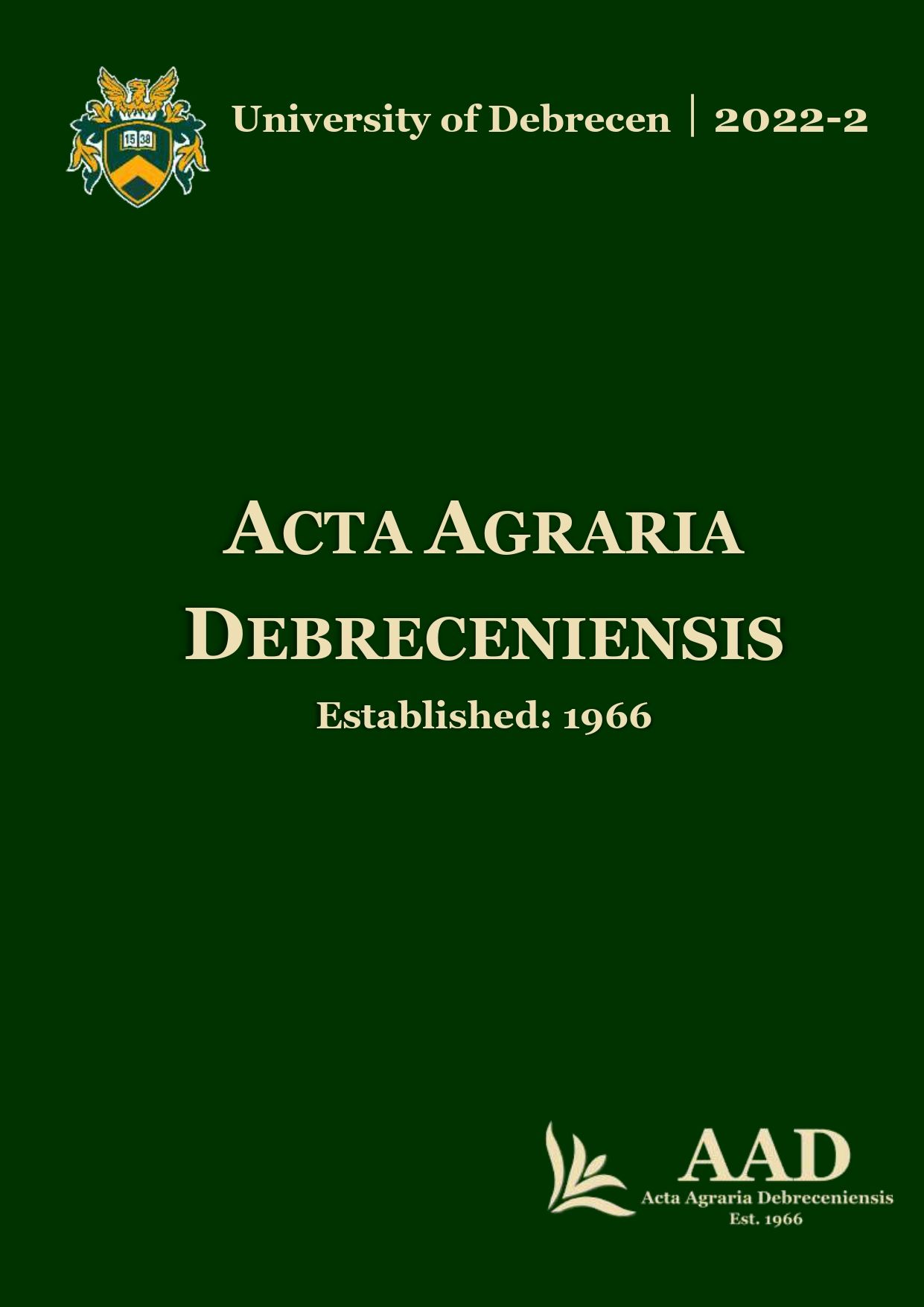Effect of noninvasive castration method on weight gain, behavior and meat quality of ram lambs
Authors
View
Keywords
License
Copyright (c) 2022 by the Author(s)

This work is licensed under a Creative Commons Attribution 4.0 International License.
How To Cite
Accepted 2022-10-20
Published 2022-12-06
Abstract
In the course of producing heavyweight lambs (above 35 kg), males need to be separated from females at the end of the fattening period. If not, the rams must be castrated because they reach sexual maturity, and their activity bothers the ewes or unwanted pregnancy may occur. The present study surveys if the Hungarian sheep keepers know or use the non-surgical elastrator method for castration and assess the effect of castration (surgical and non-surgical) on daily weight gain, behavior, moving activity, and meat quality of rams, respectively. We found many advantages regarding the use of the elastrator method. Based on the survey results, 100% of farmers who used elastrator had a positive experience and favorable opinion about this method. There is no need to separate the rams, which allows for less area requirement and more economical technological conditions. The traditional castration (with a knife) process is longer (4–6 minutes), and caused longer-lasting stress while the elastrator application is bloodless, took only 20–30 seconds, and were stress-free. The number of steps of ring-gelded individuals was much lower than that of the non-castrated rams. The difference in steps number could also be seen in ewes separated into different ram groups. The weight gains of individuals castrated by the ring were better than the surgically castrated ones and also individuals with testicles. The palatability of the meat from the non-castrated group was less favorable, and the chewiness of the ringed group was the best. Finally, our results highlighted the benefits of the noninvasive elastrator method in animal welfare aspects.
References
- AKI (Research Institute for Agricultural Economics) (2018): Agrárpiaci jelentések. Élőállat és hús. (Agricultural Statistical Information System, Live animals and meat) XXI. /6.
- AVA (Australian Veterinary Association) (2016): Castration of adult rams. https://www.ava.com.au/policy-advocacy/policies/sheep-and-goat-health-and-welfare/castration-of-adult-rams/
- AWATP (2018): Animal Welfare Approved Technical Papers: PCE13v2 – TAFS 10 - Castration of Sheep 032111 © https://agreenerworld.org/wp-content/uploads/2018/05/TAFS-10-Castration-of-Sheep-v2.pdf Download: 10.15. 2019.
- Bedos, M.–Duarte, G.–Flores, J.A.–Fitz-Rodríguez, G.–Hernández. H.–Vielma, J.–Fernández, I.G.–Chemineau, P.–Keller M.–Delgadillo J.A. (2014): Two or 24 h of daily contact with sexually active males results in different profiles of LH secretion that both lead to ovulation in anestrous goats M. Domestic Animal Endocrinology 48. pp: 93–99. DOI: 10.1016/j.domaniend.2014.02.003
- Dyrmundssorn, R. (1981): Natural factors affecting puberty and reproductive performance in ewe lambs: A review. Elsevier Scientific Publishing Company. Livestock Production Science, 8 55–65.
- FAWC (Farm Animal Welfare Council) (2008): Report on the implications of castration and tail docking for the welfare of lambs, June 2008. FAWC, London. https://www.gov.uk/government/publications/fawc-report-on-the-implications-of-castration-and-tail-docking-for-the-welfare-of-lambs
- Gkarane, V.–Allen, P.–Gravador, R.S.–Diskin, M.G.–Claffey, N.A.–Fahey, A.G.–Brunton, N.P.–Farmer, L.J.–Moloney, A.P.–Monahan, F.J. (2017): Effect of castration and age at slaughter on sensory perception of lamb meat. Small Rumin. Res., 157, pp. 65–74. https://doi.org/10.1016/j.smallrumres.2017.10.011
- Grant C. (2004): Behavioral responses of lambs to common painful husbandry procedures. Applied Animal Behaviour Science 87 255–273.
- Hamito, D. (2008): Castration of sheep and goats. ESGPIP
- Program. Technical Bulletin No.18. http://www.esgpip.org/PDF/Technical%20bulletin%20No.%2018.pdf
- Jensen, P (2017): The ethology of domestic animals. 3rd edition. An introductory text. CABI, USA. ISBN:-13:978178639165
- Kent, J.E.–Molony, V.–Graham, M.J. (1998): Comparison of methods for the reduction of acute pain produced by rubber ring castration or tail docking of week-old lambs. Veterinary Journal, 55 (1): 39–51. DOI: 10.1016/s1090-0233(98)80033-6
- Kent, J.E.–Molony, V.–Robertson, I.S. (1993): Changes in plasma cortisol concentration in lambs of three ages after three methods of castration and tail docking. Research in Veterinary Science, 55 (2): 246–251. DOI: 10.1016/0034-5288(93)90088-w
- KSH: www.ksh.hu (downloaded: 30.08.2022)
- Kukovics, S.–Kukovics, F.–Stummer, I.–Nagy, L.–Tóth, P.–Jávor, B. (2019): Present and possible future of domestic sheep and goat sector – depending on product launches and changing market. 29th International Congress of the Hungarian Association for Buiatrics. Proceedings pp.75–90.
- Lomax, S.–Dickson, H.–Shiell, M.–Windsor, P.A. (2010): Topical anaesthesia alleviates short-term pain of castration and tail docking in lambs. Aust Vet J; 88:67–74. DOI: 10.1111/j.1751-0813.2009.00546.x
- Melches, S.–Mellema, S.C.–Doherr, M.G.–Wechsles, B.–Steiner, A. (2007): Castration of lambs: A welfare comparison of different castration techniques in lambs over 10 weeks of age. The Veterinary Journal 173:554–563. DOI: 10.1016/j.tvjl.2006.01.006
- Menzies, I.P. (2019): Reproductive Physiology of Sheep. https://www.msdvetmanual.com/management-and-nutrition/
- management-of-reproduction-sheep/reproductive-physiology-of-sheep Download: 05.2019.
- Misock, J.P.; Campion, D.R.; Field, R.A.; Riley, M.L. Palatability of heavy ram lambs. J. Anim Sci 1976, 42, 1440–1444
- Morgan, J.B.–Wheeler, M.–Koohmaraie, M.–Savell, J.W.–Crouse, J.D. (1993): Meat tenderness and calpain proteolytic system in longissimus muscle of young bulls and steers. J. Anim. Sci., 71, 1471–1476.
- Rosa, H.J.D.–Bryant, M.J. (2002): The ‘ram effect’ as a way of modifying the reproductive activity in the ewe. Review. Small Ruminant Research 45. 1–16. https://doi.org/10.1016/S0921-4488(02)00107-4
- Valasi, I.–Chadio, S.–Fthenakis, G.C.–Amiridis, G.S. (2012): Management of pre-pubertal small ruminants: Physiological basis and clinical approach. Animal Reproduction Science 130. pp: 126–134.
- Yami Alemu (2009): Castration of sheep and goats. Ethiopia Sheep and Goat Productivity Improvement Program, Technical bulletin No.18. pp. 1–13. https://www.researchgate.net/publication/292149631

 https://doi.org/10.34101/actaagrar/2/11439
https://doi.org/10.34101/actaagrar/2/11439